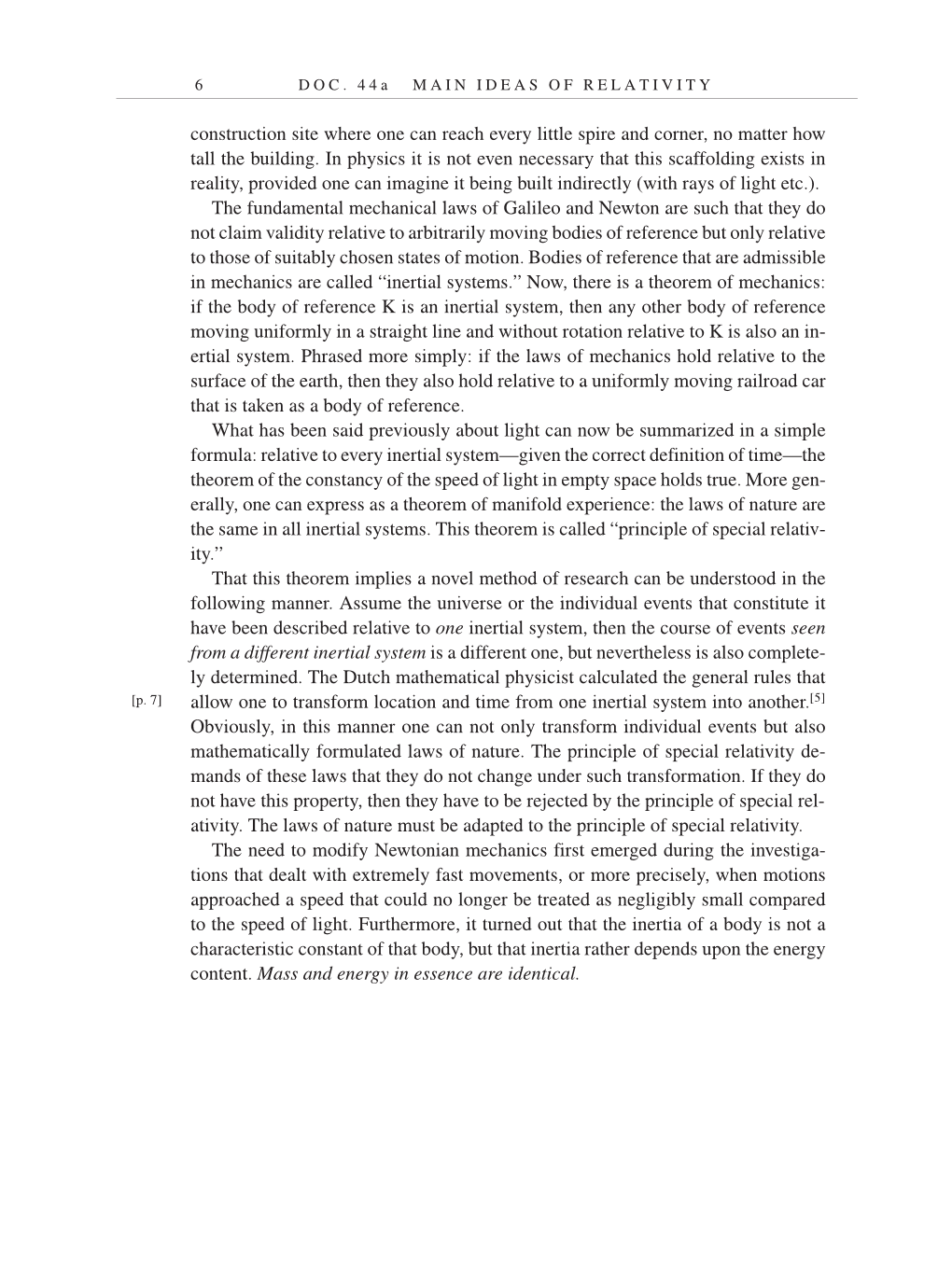6 D O C . 4 4 a M A I N I D E A S O F R E L A T I V I T Y
construction site where one can reach every little spire and corner, no matter how
tall the building. In physics it is not even necessary that this scaffolding exists in
reality, provided one can imagine it being built indirectly (with rays of light etc.).
The fundamental mechanical laws of Galileo and Newton are such that they do
not claim validity relative to arbitrarily moving bodies of reference but only relative
to those of suitably chosen states of motion. Bodies of reference that are admissible
in mechanics are called “inertial systems.” Now, there is a theorem of mechanics:
if the body of reference K is an inertial system, then any other body of reference
moving uniformly in a straight line and without rotation relative to K is also an in-
ertial system. Phrased more simply: if the laws of mechanics hold relative to the
surface of the earth, then they also hold relative to a uniformly moving railroad car
that is taken as a body of reference.
What has been said previously about light can now be summarized in a simple
formula: relative to every inertial system—given the correct definition of time—the
theorem of the constancy of the speed of light in empty space holds true. More gen-
erally, one can express as a theorem of manifold experience: the laws of nature are
the same in all inertial systems. This theorem is called “principle of special relativ-
ity.”
That this theorem implies a novel method of research can be understood in the
following manner. Assume the universe or the individual events that constitute it
have been described relative to one inertial system, then the course of events seen
from a different inertial system is a different one, but nevertheless is also complete-
ly determined. The Dutch mathematical physicist calculated the general rules that
allow one to transform location and time from one inertial system into
another.[5]
Obviously, in this manner one can not only transform individual events but also
mathematically formulated laws of nature. The principle of special relativity de-
mands of these laws that they do not change under such transformation. If they do
not have this property, then they have to be rejected by the principle of special rel-
ativity. The laws of nature must be adapted to the principle of special relativity.
The need to modify Newtonian mechanics first emerged during the investiga-
tions that dealt with extremely fast movements, or more precisely, when motions
approached a speed that could no longer be treated as negligibly small compared
to the speed of light. Furthermore, it turned out that the inertia of a body is not a
characteristic constant of that body, but that inertia rather depends upon the energy
content. Mass and energy in essence are identical.
[p. 7]
